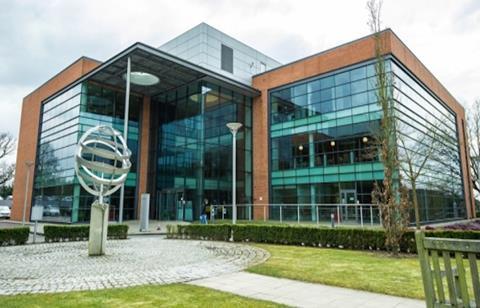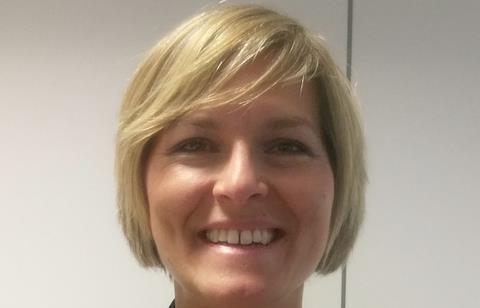
Global technology organisation Siemens has launched a new benefits platform for its 15,000 UK and Ireland-based employees in order to align its benefits technology with the organisation’s overall business focus on digitalisation.
Heike Avramovic, head of reward for UK and Ireland at Siemens, says: “It’s about culture, and the culture needs to be reflected in all [our] schemes. If we want to be a digital [organisation], and we write that across our door, we [had] better keep our promise to be a digital [organisation] in the employee experience as well. […] The technology [our engineers and technicians develop], that’s their bread and butter, so their expectations are high that we in HR deliver exactly the same.”
The employee benefits makeover
Siemens launched its benefits platform, MyChoice, which is provided by Thomsons Online Benefits and has been designed as a reward hub, in November 2017. This enables Siemens to place all components relating to benefits and reward in one location, under the same employer branding. For example, employees can access MyDeals, the organisation’s discounts scheme, as well as pensions information and employee share scheme details via the platform, to name a few elements. “It’s so much easier now on our platform, and straightforward, to find and select the benefits employees might need," says Avramovic. "But for me, the biggest, [most] important thing about [benefits] strategy now [is to] make this whole thing digital. We have taken our big step with a new platform.”
Replacing the organisation’s previous benefits platform, which was provided by its consultancy Mercer, also gave Siemens the opportunity to spring clean its benefits offering. Notably, the organisation has now moved to anytime enrolment to facilitate benefits selections at any time of the year, aided by technology that allows employees to use any device to make their benefits choices. “It has become a much more agile way [of] how [we can] put together [our] benefits,” explains Avramovic.
Emphasising employee choice
One of the biggest changes linked to the new platform, however, has been the introduction of a flexible bank portal, which has replaced retail vouchers. This allows employees to select how much of their salary they wish to deduct and place into their individual flexible bank portal. Employees can then allocate how much of this chosen amount they want to spend on benefits, for example, discounts at supermarkets. For Avramovic, this is a vital way to empower employees to contribute to their own benefits choices. “We have a very broad range of businesses, so our [workforce] is very diverse,” she says. “We had to realise that one-size-fits-all just doesn’t work; it’s one-size-fits-one. It doesn’t meet our employees' needs if we decide on behalf of them what we should give them, so choice is the key. That’s why we provide them with valued choices.”
Other benefits enhancements that the organisation has made as a result of implementing its new platform include harmonising its holiday trading proposition, allowing staff to buy and sell holiday up to five days a year, reducing the costs of benefits such as travel insurance, and digitalising the process for making additional pensions contributions. “We’ve made it easier for people to now select additional contributions if they wanted to, that’s all via this platform now, we don’t have any paper process about this,” adds Avramovic.
The move to its new platform was also aligned with the introduction of an online financial education programme, provided by Nudge, in November 2017. Although Siemens has previously carried out signposting exercises to relevant industry bodies such as Pensions Wise when the pension freedoms came into force in 2015, this is the first time it has implemented its own wider financial education programme. “We want happy people at the workplace who can enjoy what they do, and [who] don’t need to worry about their finances,” Avramovic says.
The fact that the financial education programme is online-based is also not coincidental. Avramovic explains that this is to ensure Siemens’ wide spectrum of employees can all access the personalised financial guidance provided. “We are so spread out across the country and are so different. For us, we need something where people can go at any time they like from any device.”
The launch campaign
With so much benefits change afoot, communication to Siemens’ diverse workforce was conducted in September and October 2017 as part of the organisation’s wider Futuremaker employer brand campaign, prior to the official implementation date for its new benefits platform, the financial education programme, and the benefits enhancements. “Everything was aligned," explains Avramovic. "We wouldn’t launch just one bit; it was part of the bigger picture.”
The campaign mainly consisted of roadshows around its national sites. “What we find very helpful is that we do roadshows, and we really listen to people,” says Avramovic.
Roadshows are typically held annually within the organisation, however, this may change depending on how the benefits strategy develops.
On-site posters and digital screens, emails, management briefing packs and subsequent team briefing meetings, as well as internal social media were also used as part of the launch communication strategy.
Utilising employee feedback
Due to the diverse workforce demographic at Siemens, face-to-face communications are by far the most effective communication method, followed by the organisation’s internal social media, Siemens Social Network, which was launched in July 2013. “A lot of people are not online much here because they might be service engineers,” says Avramovic.
With this in mind, the main method of collecting employee feedback is via an initiative called the Voice of the Customer. This involves representatives from the HR team visiting different national sites on a quarterly basis to conduct focus groups with employees about their benefits package. “[They're] the best sessions ever because [we] get real feedback and a real understanding [of] what actually is not working," explains Avramovic. "These sessions on-site were very valuable because [we] get the stories.”
This face-to-face feedback is supported with an annual employee engagement survey, which features questions on reward and benefits, as well as a smaller survey that is carried out within the benefits platform itself. However, these are used mainly as pulse checks rather than to inform the benefits strategy. The organisation further tracks the success of its benefits by measuring take-up statistics, and by completing industry benchmarking on an annual basis through its benefits consultant.
On the 2018 agenda
Despite rolling out extensive changes to the employee benefit proposition in 2017, Avramovic and her team are not slowing down at all in the new year, with more changes already on the agenda. For example, Siemens’ company car scheme has undergone a revamp following the government’s changes to the employer tax on salary sacrifice arrangements. Applying to all car orders from January 2018 onwards, employees categorised as low business mileage users can select either an ultra-low emission vehicle (ULEV) or cash, while employees categorised as high business mileage users can only choose the company car option. This latter group can then select from diesel, petrol or ULEV options.
Siemens is also investing more in on-site charging points for electric vehicles, particularly because this is technology the organisation already develops. On-site charging points are currently available at its Poole, Manchester and Warwick sites among others, however more will be rolled out over the next couple of years, says Avramovic. This is particularly attractive because, from April 2018, charging a car onsite will no longer be classed as a taxable benefit, as announced in the Autumn 2017 budget.
In March 2018, the organisation will also award every global employee under senior management level shares in Siemens as part of its profit sharing employee share plan, which launched four years ago. This global share plan aimed to allocate free Siemens' shares, subject to tax and national insurance, to eligible global employees once the profit sharing pool target of €400 million was reached. “Now the pool is full and it will pay out, so that’s the big thing for us coming in March,” says Avramovic.
This year will also see the continuation of the organisation’s peer-to-peer recognition scheme, Champions, which was implemented in 2009. This accumulates in an annual award event, typically held in November, where winning employees receive a trophy, certificate and a monetary prize.
For Avramovic, Siemens’ benefits offering is crucial to attracting, retaining and motivating the organisation’s diverse workforce, especially because the business’ key challenge is its own internal complexity, with employees scattered across different sections of the organisation working on varying technologies. "They have different needs," she says. "[We] have to think about [...] what is driving them. They might have a totally different agenda. How do [we] work out what works best for us all? And that was the biggest challenge.
“Employees are the heart of our organisation. Our principle is to provide employees with ownership and control and choice, so they could basically choose what fits their personal circumstances, their personal needs, as well as offering benefits that are cost-efficient so employees can reduce tax and national insurance. That’s a win-win for both employees and the [organisation].”
At a glance
Siemens is a global technology organisation that uses electrification, digitalisation and automation to create a diverse product portfolio, spanning the automation, building technologies, drive technologies, print technologies, energy, healthcare and mobility sectors. In the UK and Ireland, Siemens has 30 main national operating sites in addition to 14 factory sites, as well as train depots and service offices.
Due to the nature of business at Siemens, the majority of its workforce is comprised of engineers and technicians, along with central staff across departments such as finance, project management, communications, procurement, and HR.
Siemens has 15,000 employees based across the UK and Ireland, of which 79% are men and 21% are female. The average age is 40.
Business objectives for 2018
- To make digitalisation work.
- To place the customer at the core.
- To lead by example, including becoming a more responsible organisation, fostering inspirational leadership, and encouraging volunteering.

Career history
Heike Avramovic, head of reward for UK and Ireland, joined Siemens in Munich, Germany, upon finishing university in January 2002. Avramovic progressed through numerous HR-centric roles, such as HR advisor, HR consultant, and HR business partner for senior managers, while based in Germany, but a move to the UK saw her focus change to reward. This led to her being part of a global compensation and benefits team, again in Germany, to help roll out a global, organisation-wide job catalogue and grading scheme, before she returned to the UK as a senior reward partner. In 2016, Avramovic was promoted to her current role.
For Avramovic, her proudest career achievement was when she was first based in the UK in 2011, and she was assigned to a project to develop and launch an employer value proposition and total reward statements. “We were one of the first ones across the whole Siemens world to do this, and it was a great project," she says. "It was recognised internally and externally.”











